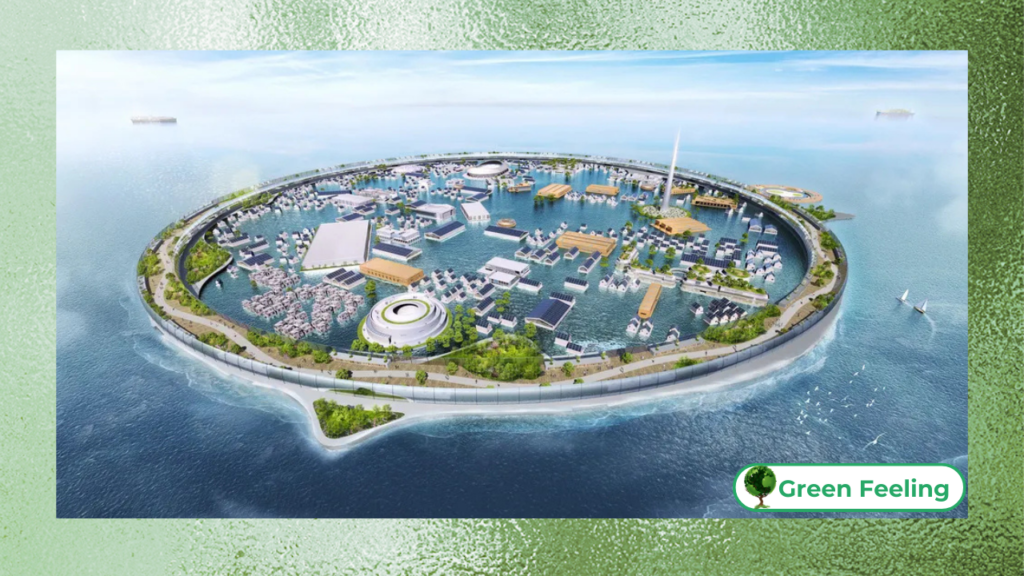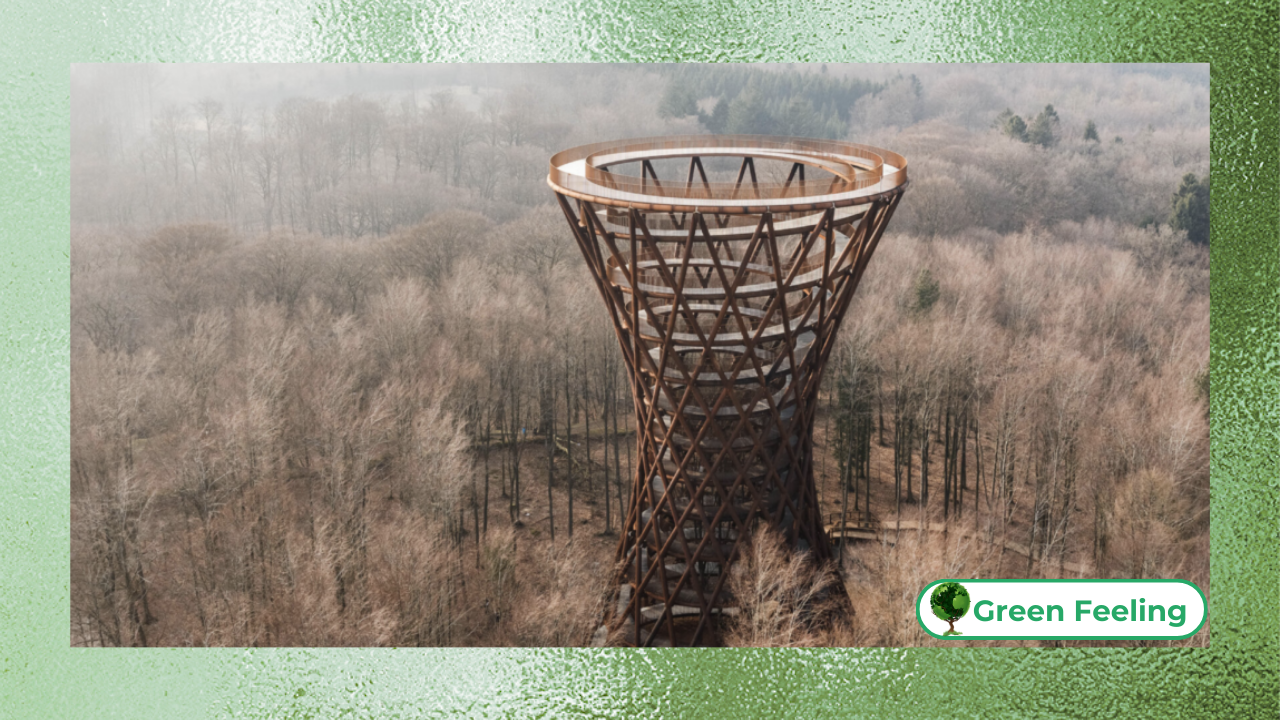Floating Cities: Resilient Architecture for the Challenge of Climate Change
As the impacts of climate change become increasingly severe, rising sea levels and extreme weather events pose significant threats to coastal cities worldwide.

In response, architects and urban planners are exploring innovative solutions, including the concept of floating cities. These self-sustaining, resilient structures offer a promising way to adapt to environmental challenges while providing sustainable living spaces for future generations.
This article examines the potential of floating cities, their architectural principles, and their role in addressing the challenges of climate change.
The Need for Resilient Architecture
Climate change is one of the most pressing issues of our time, with rising sea levels, flooding, and extreme weather events threatening the stability of coastal communities. Traditional urban infrastructure is often ill-equipped to handle these challenges, leading to displacement, economic losses, and environmental degradation.
Floating cities represent a bold and innovative approach to urban design, offering a way to adapt to these changes while minimizing environmental impact.
Floating cities are not just a futuristic concept; they are a practical response to the realities of a changing climate. By leveraging advanced technologies and sustainable design principles, these cities can provide safe, resilient, and eco-friendly living spaces.
This article explores the architectural and environmental aspects of floating cities, highlighting their potential to transform the way we live in harmony with nature.
“Floating cities are not just about surviving climate change; they are about thriving in a new era of sustainable and resilient urban living.” – Koen Olthuis, Waterstudio.NL
The Concept of Floating Cities
Floating cities are urban settlements built on water, using buoyant platforms or structures to remain afloat. These cities can be located on oceans, lakes, or rivers, and are designed to be self-sustaining and adaptable to changing environmental conditions.
The concept is not entirely new; floating communities have existed for centuries in places like the Uros Islands in Peru and the fishing villages of Southeast Asia. However, modern floating cities incorporate advanced technologies and sustainable practices to address contemporary challenges.
Key Features of Floating Cities:
- Modular Design: Floating cities are often composed of modular units that can be easily expanded or reconfigured.
- Renewable Energy: Solar panels, wind turbines, and wave energy systems provide clean, sustainable power.
- Water Management: Advanced systems for desalination, wastewater treatment, and rainwater harvesting ensure a reliable water supply.
+ The Alchemy of Glass: The Role of Transparent Facades in Modern Design
Architectural Principles of Floating Cities
The design of floating cities is guided by principles of resilience, sustainability, and adaptability. Architects and engineers must consider factors such as buoyancy, stability, and environmental impact when creating these structures.
Buoyancy and Stability
The foundation of any floating city is its ability to remain stable and afloat. This is achieved through the use of buoyant materials, such as reinforced concrete or lightweight composites, and innovative designs that distribute weight evenly. Some floating cities use pontoons or floating platforms, while others employ amphibious structures that can rise and fall with water levels.
Sustainable Materials
Floating cities prioritize the use of sustainable and recyclable materials to minimize their environmental footprint. For example, cross-laminated timber (CLT) is a popular choice due to its strength, lightweight properties, and low carbon emissions.
Additionally, materials like recycled plastics and composites are being explored for their durability and eco-friendliness.
Energy Efficiency
Energy efficiency is a cornerstone of floating city design. Buildings are often equipped with smart systems that optimize energy use, while renewable energy sources like solar, wind, and wave power provide clean electricity. Some designs even incorporate algae-based bioenergy systems, which generate energy while absorbing carbon dioxide.
+ Nature and Design: Biophilic Architecture and Its Practical Applications
Environmental Benefits of Floating Cities
Floating cities offer numerous environmental benefits, making them a viable solution for climate-resilient urban development.
Adaptation to Rising Sea Levels
One of the most significant advantages of floating cities is their ability to adapt to rising sea levels. Unlike traditional coastal cities, which are vulnerable to flooding and erosion, floating cities can rise and fall with the water, ensuring long-term stability.
Reduced Land Use Pressure
By utilizing water surfaces, floating cities reduce the pressure on land resources, preserving natural habitats and reducing urban sprawl. This is particularly important in densely populated coastal regions where land is scarce.
Enhanced Biodiversity
Floating cities can be designed to promote biodiversity by incorporating green spaces, underwater habitats, and artificial reefs. These features not only enhance the local ecosystem but also provide recreational and educational opportunities for residents.
+ From Paper to Digital: The Technological Revolution in Architecture and Its Environmental Impacts
Table: Comparison of Floating Cities and Traditional Coastal Cities
| Aspect | Floating Cities | Traditional Coastal Cities |
| Resilience | Adaptable to rising sea levels | Vulnerable to flooding and erosion |
| Land Use | Utilizes water surfaces | Relies on limited land resources |
| Energy Sources | Renewable energy systems | Often dependent on fossil fuels |
| Environmental Impact | Promotes biodiversity, low carbon footprint | High environmental impact, urban sprawl |
| Sustainability | Self-sustaining, eco-friendly | Often unsustainable, resource-intensive |
Challenges and Future Prospects
While floating cities offer many benefits, they also face significant challenges. High construction costs, regulatory hurdles, and public acceptance are among the key obstacles to their widespread adoption. However, ongoing research and pilot projects are addressing these issues, paving the way for future developments.
Pilot Projects and Innovations
Several pilot projects are already underway, demonstrating the feasibility of floating cities. For example, the Oceanix City project, supported by the United Nations, aims to create a prototype floating city that can house up to 10,000 people. Similarly, the Maldives Floating City project is developing a sustainable community to address the country’s vulnerability to rising sea levels.
The Role of Technology
Advancements in technology, such as artificial intelligence, IoT (Internet of Things), and advanced materials, are driving the development of floating cities. These technologies enable smarter, more efficient designs and enhance the resilience and sustainability of these urban spaces.
Conclusion:
Floating cities represent a visionary approach to urban design, offering a sustainable and resilient solution to the challenges of climate change.
By leveraging innovative technologies and sustainable practices, these cities can provide safe, eco-friendly living spaces while preserving natural ecosystems and reducing environmental impact.
As the world grapples with the realities of climate change, floating cities offer a glimpse into a future where humanity and nature coexist in harmony. They remind us that, with creativity and collaboration, we can build a world that is not only resilient but also sustainable and equitable.
The journey towards floating cities is just beginning, but their potential to transform our relationship with the environment is immense.
References:
OLTHUIS, Koen. Waterstudio.NL: Architecture and Urban Design on Water. Waterstudio.NL, 2023. Available at: https://www.waterstudio.nl. Accessed on: October 10, 2023.
Additional Sources:
- Oceanix City: A Prototype for Floating Cities. Available at: https://www.oceanix.org. Accessed on: March 1, 2025.
- Maldives Floating City: A Sustainable Solution. Available at: https://www.maldivesfloatingcity.com. Accessed on: March 1, 2025.
- The Role of Technology in Floating Cities. Available at: https://www.archdaily.com. Accessed on: March 1, 2025.






